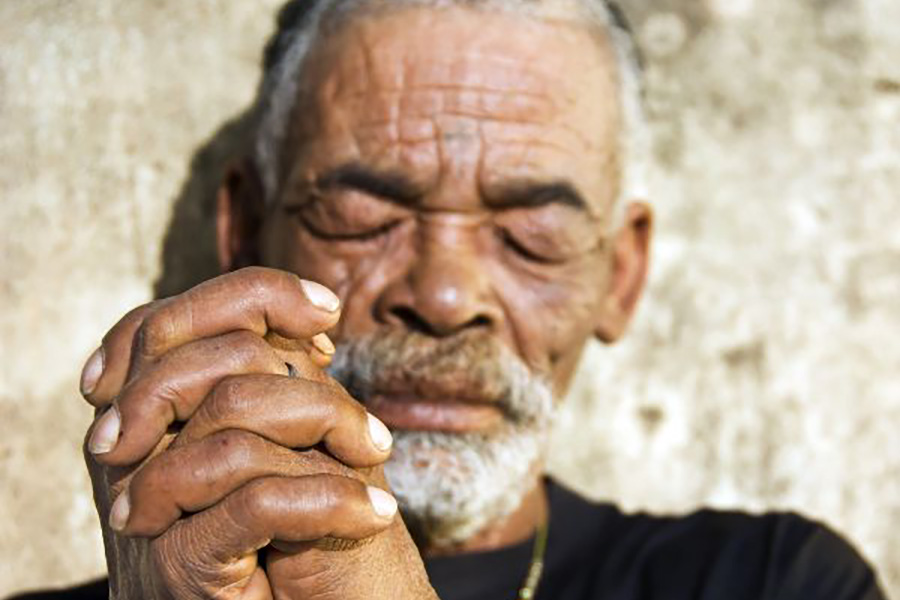The word ābar (𐤏𐤁𐤓) or “Eber” is the progenitor of the 𐤏𐤁𐤓𐤉𐤌 (Ābarayam) and the first 𐤏𐤁𐤓𐤉 (Ābaray). From him came the most prominently known groups of the 𐤉𐤔𐤓𐤀𐤋𐤉𐤌 (Yasharaalayam) and 𐤉𐤔𐤌𐤏𐤀𐤋𐤉𐤌 (Yashamaāalayam). He is a great-grandson of 𐤍𐤅𐤇 (Nauakh)’s son 𐤔𐤌 (Sham). He became the father of 𐤐𐤋𐤂 (Phalag) at the age of 34 years old, and then later would father 𐤉𐤒𐤈𐤍 (Yaqathan). He was a distant ancestor of 𐤀𐤁𐤓𐤄𐤌 (Abaraham). According to the scriptures, 𐤏𐤁𐤓 (Ābar) died at the age of 464, when 𐤉𐤏𐤒𐤁 (Yaāqab) or 𐤉𐤔𐤓𐤀𐤋 (Yasharaal) was 79.
The Paleo-Hebrew language or the original language of the Ābarayam is one spoken with an emphasis on the rauakh (breath, wind, spirit). With the language of the Ābarayam, each letter has a meaning and a number associated with it that adds meaning to each word they’re used with. Below you will be able to learn more about the letter in Ancient Hebrew, Yiddish Hebrew, Greek, and much more.
Letter Meanings
| Letter | Meaning |
|---|---|
| 𐤏 (ā) – ā | eye, to see, experience, watch, heed, know, cover, color |
| 𐤁 (b) – ba | House, family, “in” |
| 𐤓 (r) – ra | head and person, man, beginning, top, rule, inheritance, possession |
| Ābarayat Number | 272 = 70 (ā) + 2 (b) + 200 (r) |
| Hebrew Gematria | |
| English Gematria | |
| Simple Gematria |
Based on the meaning of the letters the word could be defined as:
- “cover of family inheritance”
Definitions for 𐤏𐤁𐤓 / ābar
| Language | Word | Transliteration | Pronunciation | Definition |
|---|---|---|---|---|
| Ābarayat | 𐤏𐤁𐤓 | ābar | eh-bar | region across or beyond, to pass over, through, or by, pass on. Potentially written as ghabar (pronounced: ghaw-bar). |
| English | Eber | Eber | eb-er’ | an ancestor of the Israelites and the Ishmaelites according to the “Table of Nations”. |
| Hebrew | עֲבַר | abar or Eber | ay’-ber or ab-ar’ or aw-bar’ | region across or beyond, to pass over, through, or by, pass on. |
| Arabic | ماضي or انسان or عابر | madi or ‘iinsan or eabi | maw-dee or en-san or ay’-ber | (1) past, bygone |
| Greek | Ἕβερ | Eber | eb-er’ | Eber, father of Peleg and son of Shelah. An ancestor of Christ |
Lineage
𐤏𐤁𐤓 (ābar) was a great-grandson of 𐤔𐤌 𐤁𐤍 𐤍𐤅𐤇 (Sham ban Nauakh) and the father of 𐤐𐤋𐤂 (Phalag), born when 𐤏𐤁𐤓 (ābar) was 34 years old, and of 𐤉𐤒𐤈𐤍 (Yaqathan). He was the 𐤁𐤍 (ban) of 𐤔𐤋𐤇 (Shalakh), a distant ancestor of 𐤀𐤁𐤓𐤄𐤌 (Abaraham). According to the Hebrew scriptures, 𐤏𐤁𐤓 (ābar) died at the age of 464.
In the Septuagint, the name is written as “Heber”/”Eber” (῞Εβερ/Ἔβερ), and his father is called “Sala” (Σαλά/Σάλα). His son is called “Phaleg”/”Phalek” (Φαλέγ/Φάλεκ), born when “Heber” was 134 years old, and he had other sons and daughters. “Heber” lived to the age of 464 years.
The Name
The Aramaic root עבר (ʕ-b-r) is connected with crossing over and the beyond. Considering that other names for descendants of 𐤔𐤌 (Sham) also stand for places, 𐤏𐤁𐤓 (ābar) can also be considered the name of an area, perhaps near 𐤀𐤔𐤅𐤓 (Ashauar). A number of medieval scholars such as Michael the Syrian, Bar Hebraeus, and Agapius the Historian mentioned the prevailing view, that the Hebrews had received their name from 𐤏𐤁𐤓 (ābar), while also pointing out that according to others, the name “Hebrew” meant “those who cross”, in reference to those who crossed the Euphrates river with 𐤀𐤁𐤓𐤌 (Abaram) from 𐤀𐤅𐤓 (Auar) to 𐤇𐤓𐤍 (Kharan), and then to the land of 𐤊𐤍𐤏𐤍 (Kanaān).
In some translations of the New Testament, he is referred to once as “Heber”/”Eber” ([Luke 3:35, Biblical Greek: Ἔβερ] …the son of Serug, the son of Reu, the son of Peleg, the son of Heber, the son of Selah…) and should not be confused with the “Heber” mentioned at Genesis 46:17 and in Numbers 26:45 (different spelling, 𐤇𐤁𐤓, with a heth instead of 𐤏𐤁𐤓), grandson of Asher.
Hebrew
The 13th-century Muslim historian Abu al-Fida relates a story noting that the patriarch 𐤏𐤁𐤓 (ābar) [great-grandson of 𐤔𐤌 (Sham)] refused to help with the building of the “Tower of Babel” so that his language was not confused when it was abandoned. He and his family alone retained the original human language (a concept referred to as lingua humana in Latin), Hebrew/𐤏𐤁𐤓𐤉𐤕 (ābarayat), a language named after 𐤏𐤁𐤓 (ābar).
In Islam
𐤏𐤁𐤓 (ābar) is sometimes referred to in classical Islamic writings as the “father” of the “prehistoric, original Arabs” (the ʿArab al-ʿĀriba), who lived in the Arabian Peninsula after the Deluge. 𐤏𐤁𐤓 (ābar) was also identified with the Quranic prophet Hud by some of the early Muslim authorities. Other sources identify the prophet Hud as 𐤏𐤁𐤓 (ābar)’s 𐤁𐤍 (ban).
Habiru the Nomads
Habiru (sometimes written as Hapiru, and more accurately as ʿApiru, meaning “those who cross from the other side, nomads”: Akkadian: 𒄩𒁉𒊒, ḫabiru or ʿaperu) is a term used in 2nd-millennium BCE texts throughout the Fertile Crescent for people variously described as rebels, outlaws, raiders, mercenaries, bowmen, servants, slaves, and laborers.
The biblical word “Hebrew”, like Habiru, began as a social category and evolved into an ethnic one. Since the discovery of the 2nd millennium BCE inscriptions mentioning the Habiru, there have been many theories linking these to the Hebrews of the Bible.
As pointed out by Moore and Kelle, while the ʿApiru/Habiru may be related to the biblical Hebrews, they also appear to be composed of many different peoples, including nomadic Shasu and Shutu, the biblical Midianites, Kenites, and Amalekites, as well as displaced peasants and pastoralists.
Scholars such as Anson Rainey have noted, however, that while ʿApiru covered the regions from Nuzi to Anatolia as well as Northern Syria, Canaan, and Egypt, they were never confused with Shutu (Sutu) or Shasu (Shosu), Syrian pastoral nomads in the Amarna letters or other texts of the time.
Genealogy
Images for 𐤏𐤁𐤓 / ābar

Maps for 𐤏𐤁𐤓 / ābar

Definitions for 𐤏𐤁𐤓𐤉 / ābaray
When adding the 𐤉 (yad) to the end of a word, it creates a possessive of the original word. It can either signify “my…” or identify a member of a nation. For example, 𐤏𐤁𐤓 (Ābar) is the progenitor, but 𐤏𐤁𐤓𐤉 (Ābaray) is the singular descendant of him also known as a Hebrew.
| Language | Word | Transliteration | Pronunciation | Definition |
|---|---|---|---|---|
| Ābarayat | 𐤏𐤁𐤓𐤉 | ābaray | eh-barey | a descendant of Ābar, also a name for a Hebrew or Igbo person. Potentially written as ghabaray (pronounced: ghaw-barey). |
| English | Ibo | Ibo | ee-boh | Indigenous Black people of southeastern Nigeria, renowned as traders and for their art. |
| Hebrew | עִבְרִי | ibri | ib-ree’ | perhaps a descendant of Eber, also another name for an Israelite. Eberite. |
| Arabic | اللغة العبرية | allughat aleibria | al-lu-gawt al-ee-brea | Hebrew |
| Greek | Ἑβραῖος | Hebraios | heb-rah’-yos | a Hebrew, particularly one who speaks Hebrew (Aramaic). |
The Descendants of 𐤐𐤋𐤂 (Phalag)
𐤐𐤋𐤂 𐤁𐤍 𐤏𐤁𐤓 (Phalag ban Ābar) is the 𐤁𐤊𐤅𐤓 (bakauar) of the household and is the ancestor to 𐤀𐤁𐤓𐤄𐤌 (Abaraham) who is the father of many nations. 𐤀𐤁𐤓𐤄𐤌 (Abaraham) is 50% 𐤔𐤌𐤉 (Shamay) through his father 𐤕𐤓𐤇 (Tarakh) and 50% 𐤇𐤌𐤉 (Khamay) through his 𐤊𐤍𐤏𐤍𐤉 (Kanaānay) 𐤇𐤓𐤉 (Kharay) mother. Through 𐤀𐤁𐤓𐤄𐤌 (Abaraham)’s 𐤁𐤊𐤅𐤓 (bakauar) 𐤉𐤔𐤌𐤏𐤀𐤋 (Yashamaāal) twelve sons were born who are possibly the predecessors that passed on the teachings of the commandments prior to the formal creation of Islam by 𐤍𐤁𐤉𐤀 (Nabayaa) 𐤌𐤅𐤇𐤌𐤃 (Mauakhamad). 𐤉𐤔𐤌𐤏𐤀𐤋 (Yashamaāal) was 25% 𐤔𐤌𐤉 (Shamay) through his father 𐤀𐤁𐤓𐤄𐤌 (Abaraham) and 75% 𐤇𐤌𐤉 (Khamay) through his father, 𐤀𐤁𐤓𐤄𐤌 (Abaraham), and 𐤌𐤑𐤓𐤉 (Matsaray) mother.
The original 𐤉𐤔𐤌𐤏𐤀𐤋𐤉𐤌 (Yashamaāalayam) are people with higher levels of melanin in their bodies than what you may visualize as some of the Arab people with a near European light skin tone that are followers of Islam in the 20th century. The 𐤉𐤔𐤌𐤏𐤀𐤋𐤉𐤌 (Yashamaāalayam) did assimilate into multiple nations, however, they are not necessarily all of the modern Arabs, but some of the modern Arabs. They seemingly disappeared from scripture after the reign of 𐤃𐤅𐤃 (Dauad) / 𐤃𐤉𐤃 (Dayad).
Through 𐤀𐤁𐤓𐤄𐤌 (Abaraham)’s second son 𐤉𐤑𐤇𐤒 (Yatsachaq), who is 100% 𐤔𐤌𐤉 (Shamay), is the father of 𐤉𐤏𐤒𐤁 (Yaāqab) who became known as 𐤉𐤔𐤓𐤀𐤋 (Yasharaal). Twelve sons were born to 𐤉𐤔𐤓𐤀𐤋 (Yasharaal) and from the 𐤁𐤍𐤉𐤌 (banayam) of 𐤉𐤔𐤓𐤀𐤋 (Yasharaal), the 𐤀𐤃𐤅𐤌𐤉𐤌 (Adauamayam), the descendants of 𐤉𐤔𐤓𐤀𐤋 (Yasharaal)’s brother 𐤏𐤔𐤅 (Āshau), perverted the covenant with the Most High and did away with the commandments to create Rome, Catholicism, Judaism, and Christianity.
The Descendants of 𐤉𐤒𐤈𐤍 (Yaqathan)
𐤉𐤒𐤈𐤍 𐤁𐤍 𐤏𐤁𐤓 (Yaqathan ban Ābar) is the second son of the household and is the father of thirteen sons. Some make claims that he is the progenitor of the modern Arab people. This is because the descendants of 𐤓𐤏𐤌𐤄 𐤁𐤍 𐤊𐤅𐤔 𐤁𐤍 𐤇𐤌 (Raāmah ban Kauash ban Kham) lived in what is in the 20th century the Arabian Peninsula and the population of Arabia was supplemented by descendants of 𐤉𐤒𐤈𐤍 𐤁𐤍 𐤏𐤁𐤓 (Yaqathan ban Ābar) from the line of 𐤔𐤌 (Sham). The ruins of the Seat of 𐤉𐤒𐤈𐤍 (Yaqathan) are near Mecca. During the 4th century CE, the population from which the modern Arab nation emerged was a blend of different ethnic groups.
Another claim is that he is the progenitor of the Chinese people or Oriental 𐤏𐤁𐤓𐤉𐤌 (Ābarayam) as some people choose to call them. They were monotheistic for roughly 2000 years, before the arrival of Taoism and Buddhism. They worshipped a deity called Shang-Ti (or Shang-Dai), the Heavenly Emperor, which bears a remarkable resemblance to the Hebrew Shaddai. They used to partake in sacrifices, at the border of the country, and they would say a prayer that resembles the first chapter of Genesis, acknowledging Shang-Ti as the creator of heaven and earth. This claim also comes from the fact that the scriptures it says that 𐤉𐤒𐤈𐤍 (Yaqathan) went to the east but it’s not specified how far east he went.
Images for 𐤏𐤁𐤓𐤉 / ābaray



Definitions for 𐤏𐤁𐤓𐤉𐤌 / ābarayam
When adding the 𐤌 (mayam) after the 𐤉 (yad) to the end of a word, it creates a plural of the original word. It can identify multiple members of a nation. For example, 𐤏𐤁𐤓 (Ābar) is the progenitor, but 𐤏𐤁𐤓𐤉𐤌 (Ābarayam) are the plural descendants of him also known as Hebrews.
| Language | Word | Transliteration | Pronunciation | Definition |
|---|---|---|---|---|
| Ābarayat | 𐤏𐤁𐤓𐤉𐤌 | ābarayam | eh-bara-yawm | a descendants of Ābar, also a name for Hebrews or Igbo people. Potentially written as ghabarayam (pronounced: ghaw-bara-yawm). |
| English | Ibo | Ibo | ee-boh | Indigenous Black people of southeastern Nigeria, renowned as traders and for their art. |
| Hebrew | עִבְרִים | ibrim | ib-reem’ | perhaps a descendant of Eber, also another name for an Israelite. Eberite. |
| Arabic | اللغة العبرية | allughat aleibria | al-lu-gawt al-ee-brea | Hebrew |
| Greek | Ἑβραῖος | Hebraios | heb-rah’-yos | a Hebrew, particularly one who speaks Hebrew (Aramaic). |
Images for 𐤏𐤁𐤓𐤉𐤌 / ābarayam


Definitions for 𐤏𐤁𐤓𐤉𐤕 / ābarayat
When adding the 𐤕 (tau) after the 𐤉 (yad) to the end of a word, it creates a plural of the original word. It identifies the language or a sign of a nation’s existence. For example, 𐤏𐤁𐤓 (Ābar) is the progenitor, but 𐤏𐤁𐤓𐤉𐤕 (Ābarayat) is the language of him also known as Paleo-Hebrew language.
| Language | Word | Transliteration | Pronunciation | Definition |
|---|---|---|---|---|
| Ābarayat | 𐤏𐤁𐤓𐤉𐤕 | ābarayat | eh-bara-yawt | Language of Ābar. |
| English | Hebrew | Hebrew | hee-broo | a member of the Semitic peoples; an Israelite. |
| Hebrew | ||||
| Arabic | ||||
| Greek |
Images for 𐤏𐤁𐤓𐤉𐤕 / ābarayat
| Character | Name | Transliteration | Pronunciation |
|---|---|---|---|
| 𐤀 | alaph | a | ah |
| 𐤁 | bayat | b | ba |
| 𐤂 | gamal | g | ga |
| 𐤃 | dalat | d | da |
| 𐤄 | haa | h | ha |
| 𐤅 | uatad | u | ua |
| 𐤆 | zan | z | za |
| 𐤇 | khat | kh | kha |
| 𐤈 | thanaa | th | tha |
| 𐤉 | yad | y | ya |
| 𐤊 | kaph | k | ka |
| 𐤋 | lamad | l | la |
| 𐤌 | mayam | m | ma |
| 𐤍 | nauan | n | na |
| 𐤎 | samak | s | j |
| 𐤏 | āyan | ā | ā |
| 𐤐 | phaah | ph | pha |
| 𐤑 | tsad | ts | tsa |
| 𐤒 | qauaph | q | qa |
| 𐤓 | raash | r | ra- |
| 𐤔 | shan | sh | sha |
| 𐤕 | tau | t | ta |
Classification
You can continue your studies of the words by viewing Strong’s entries for:




